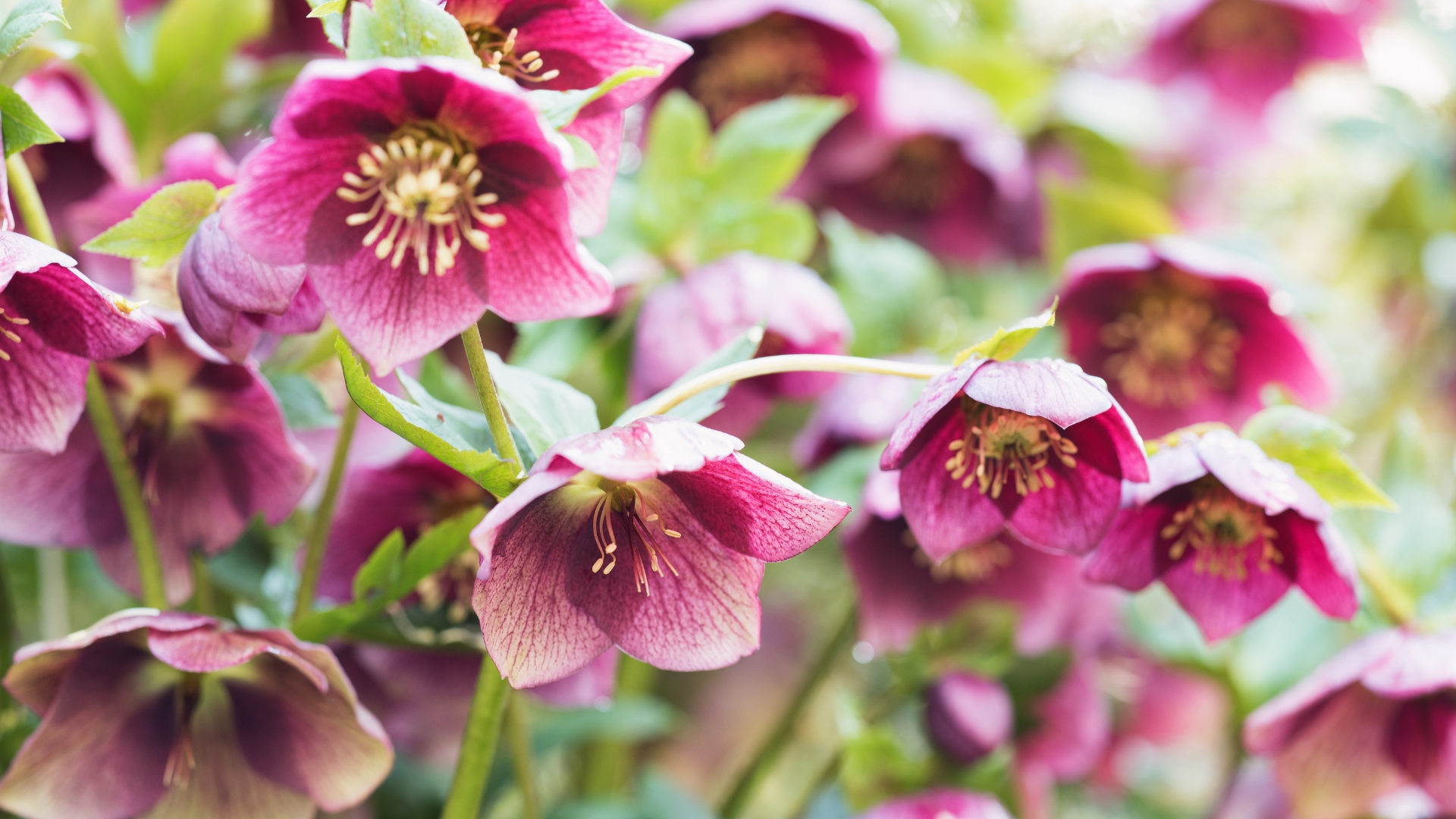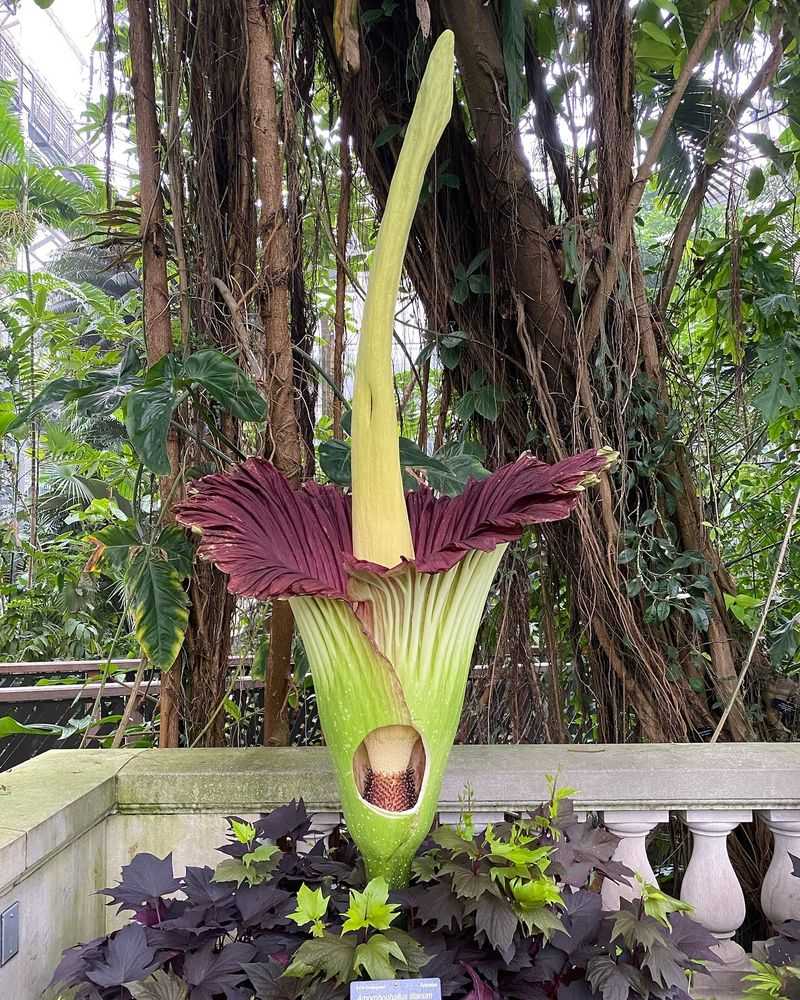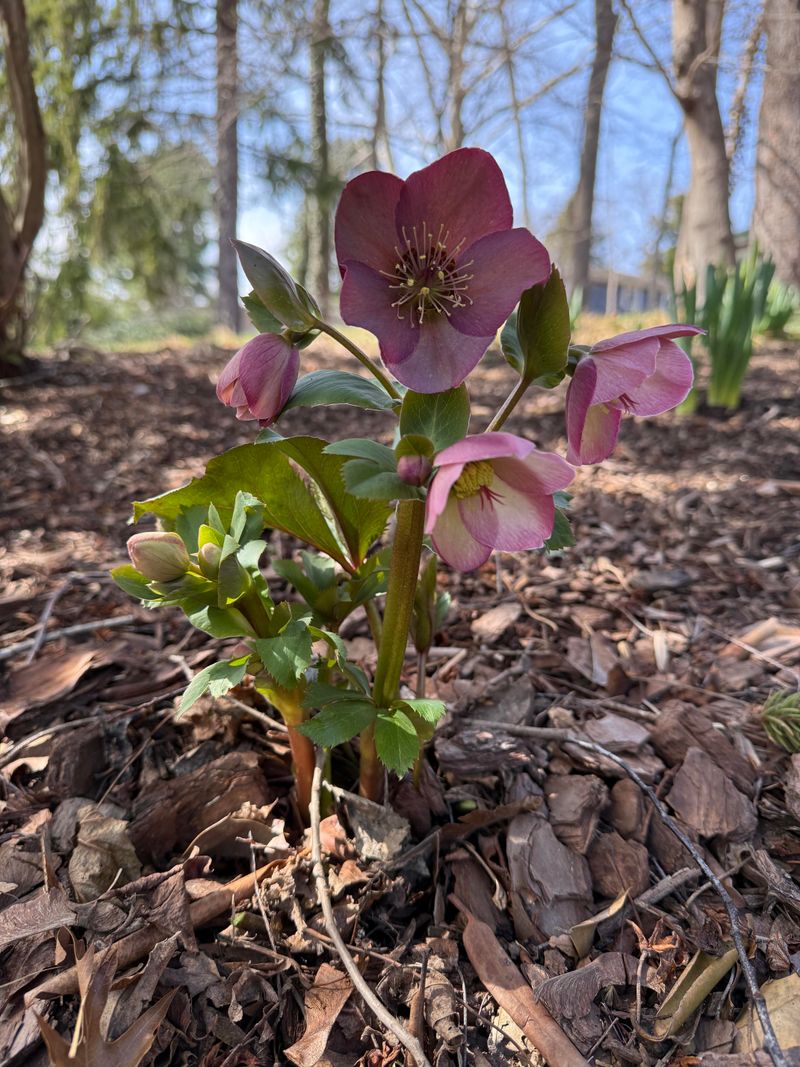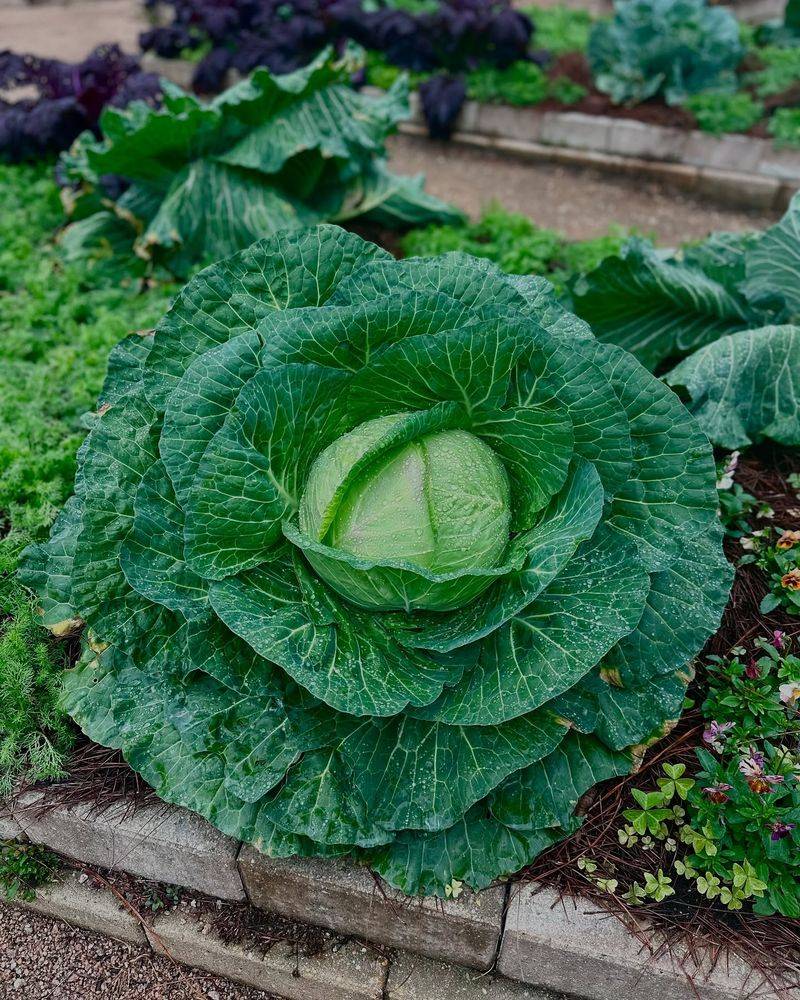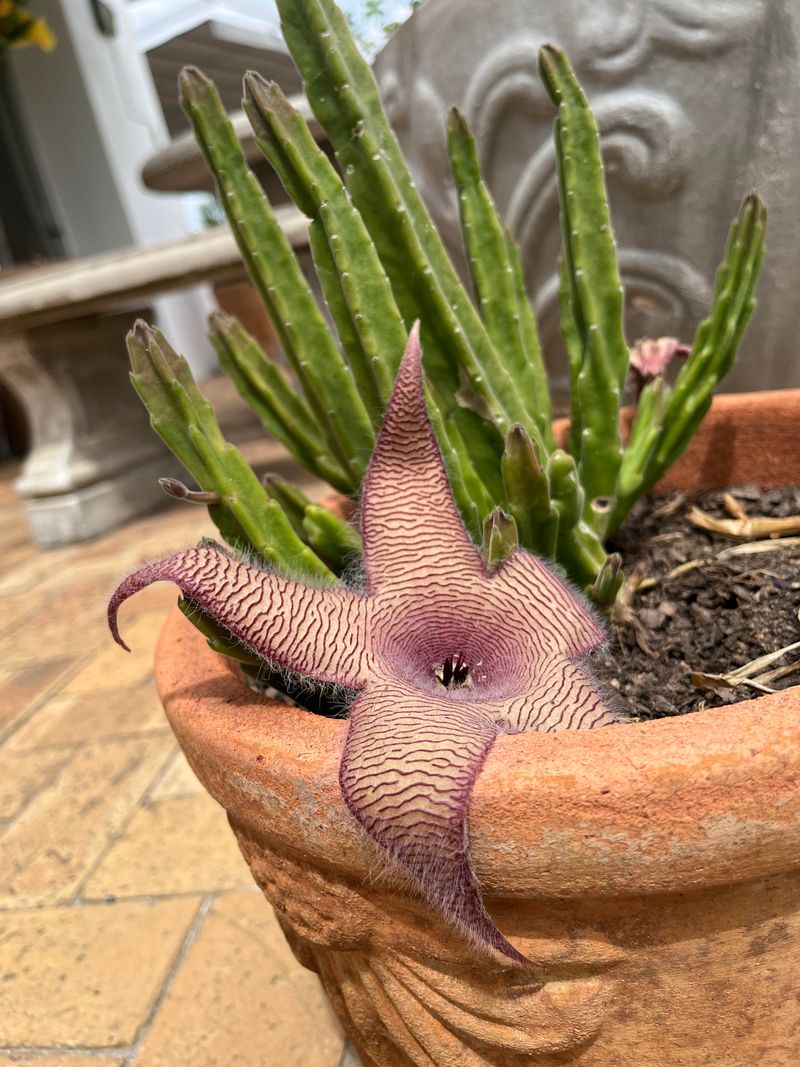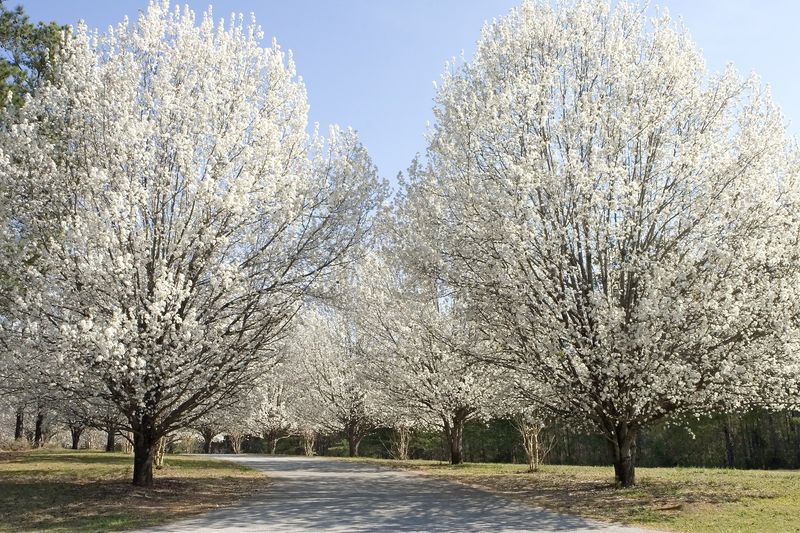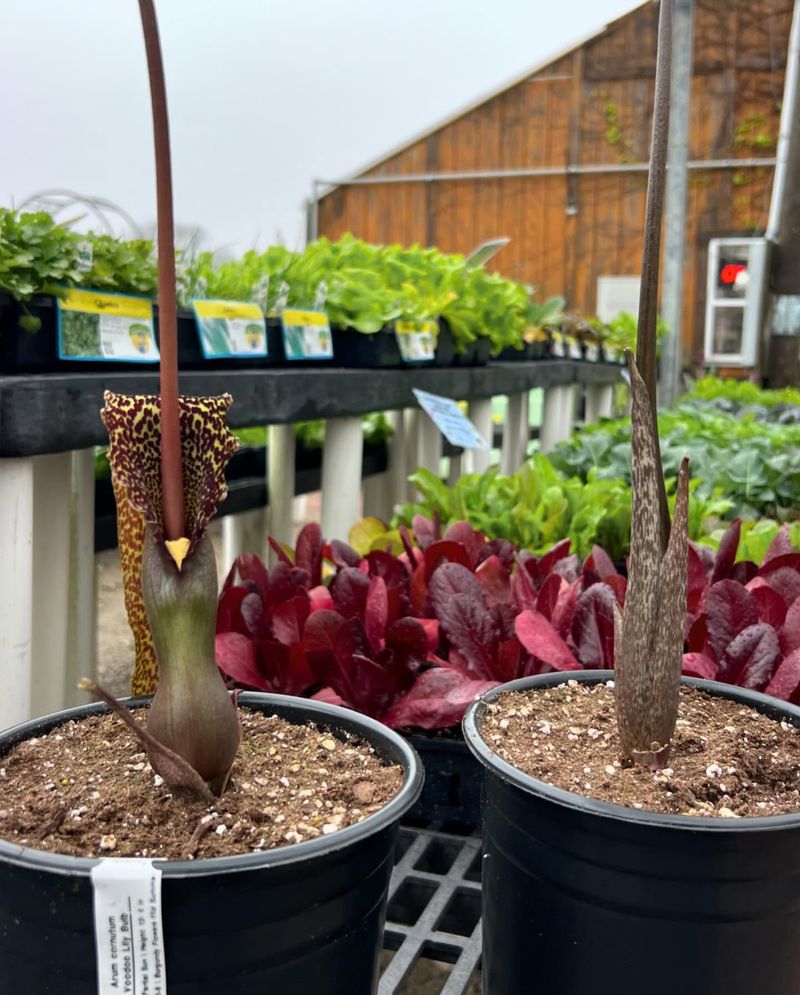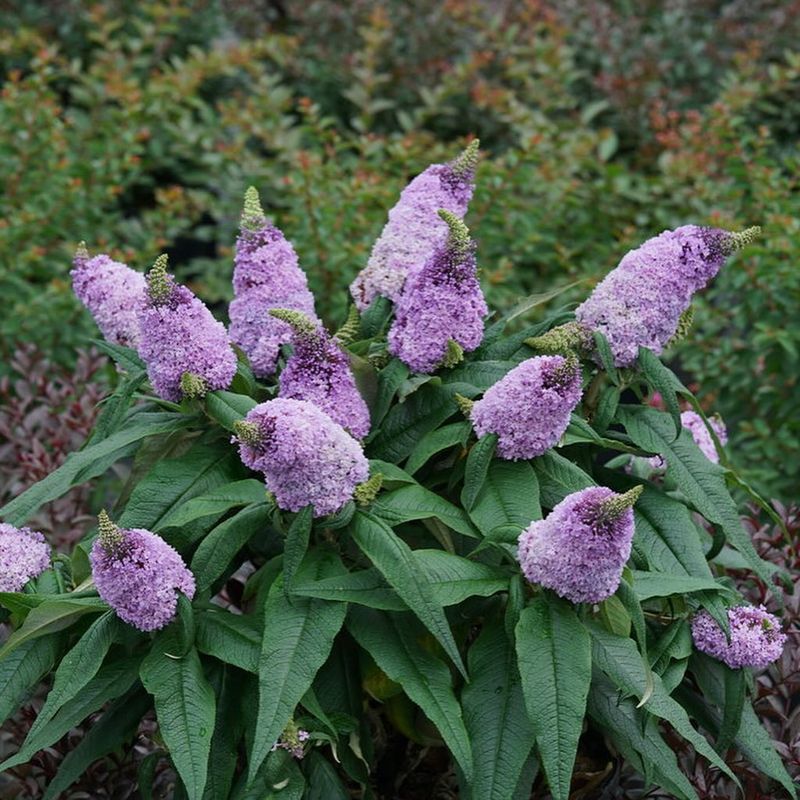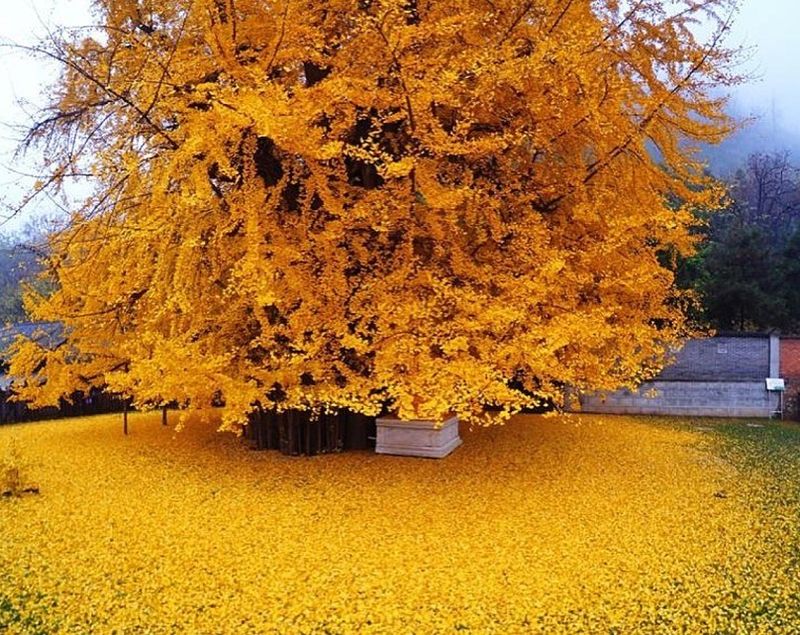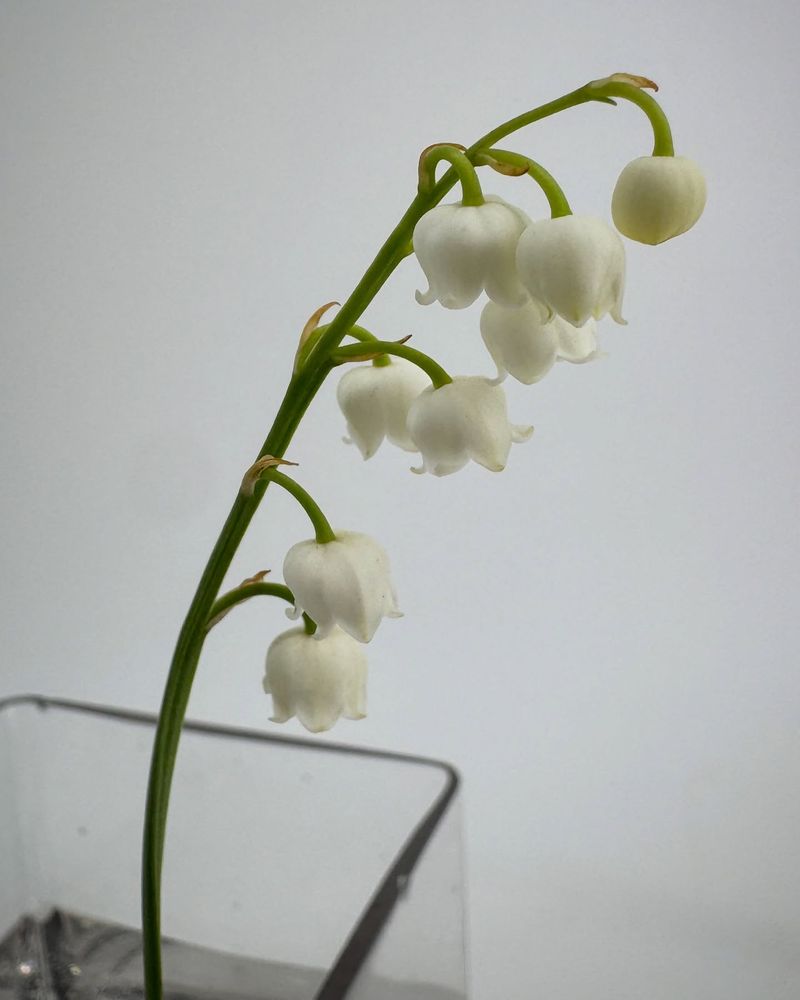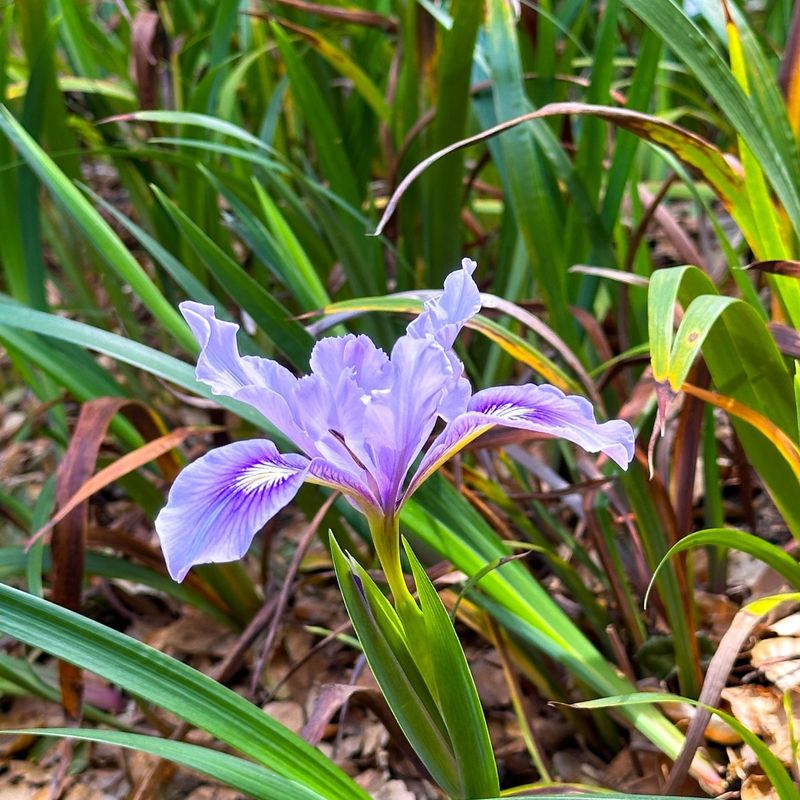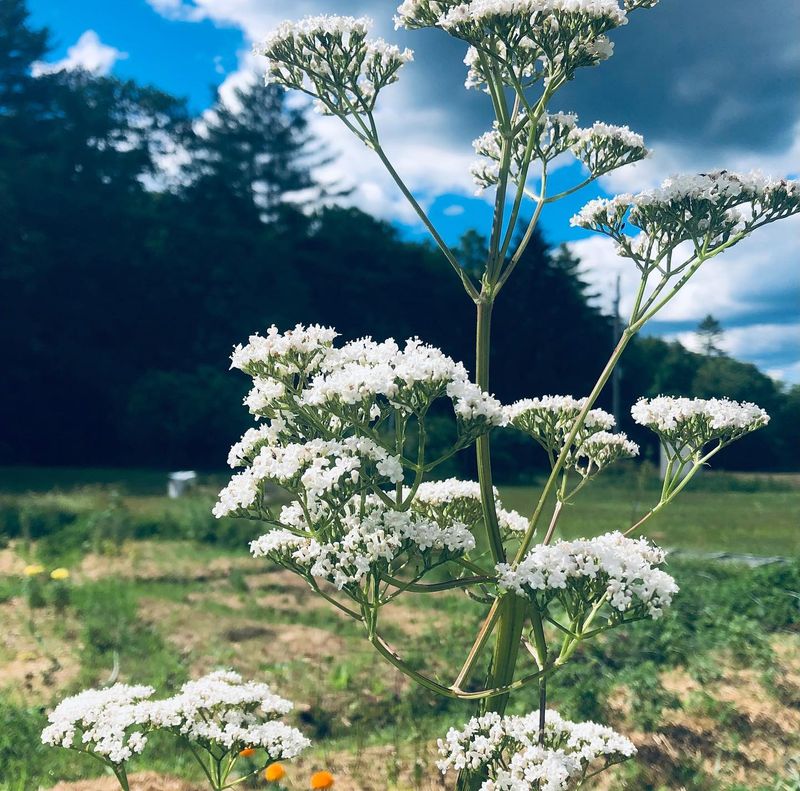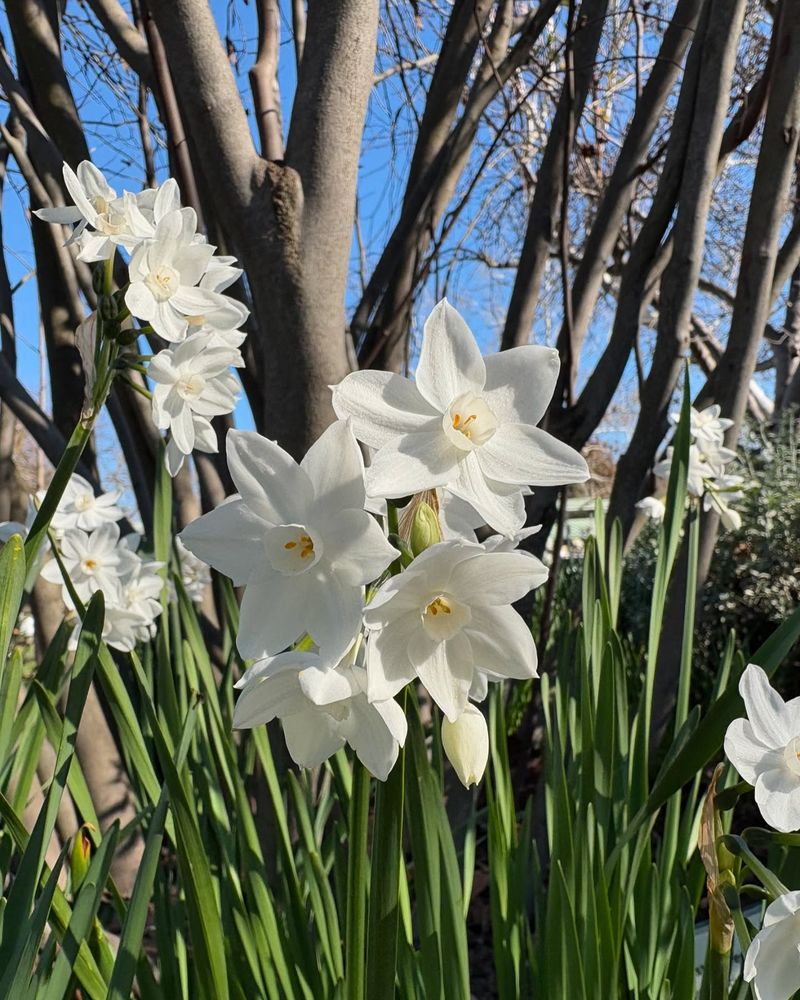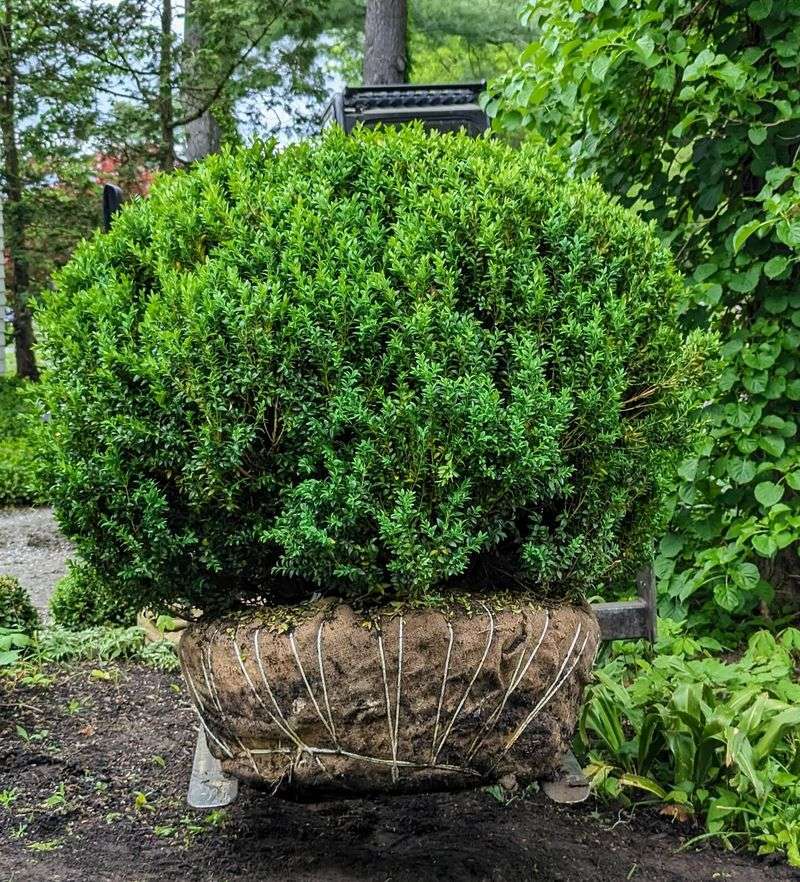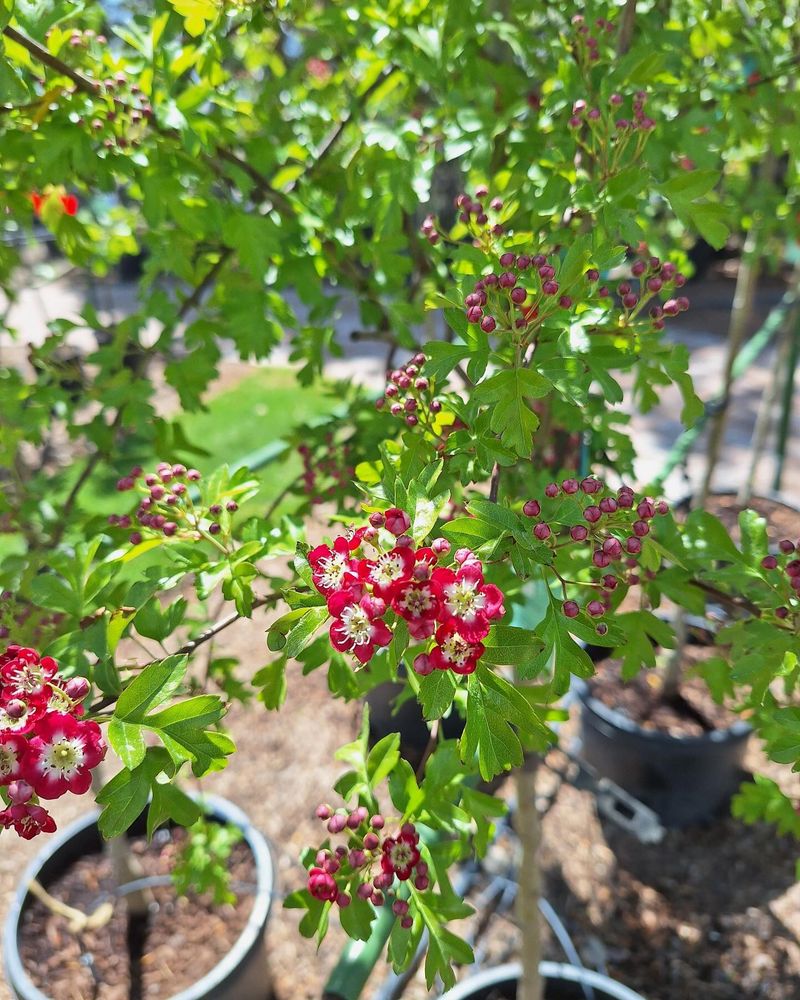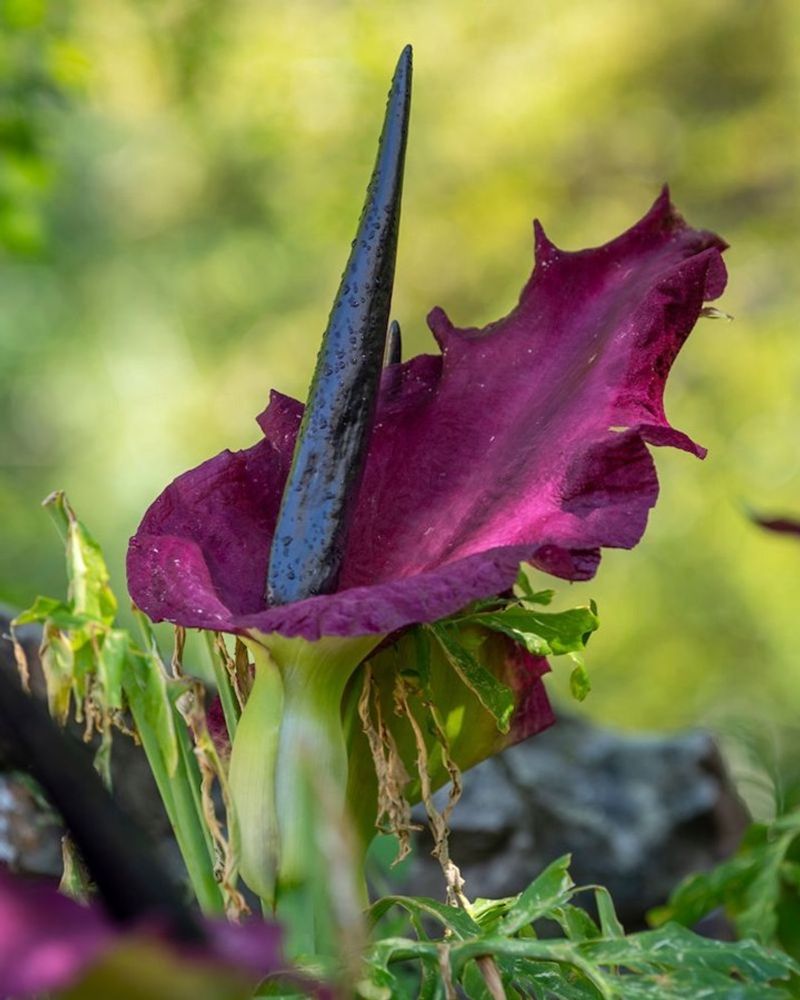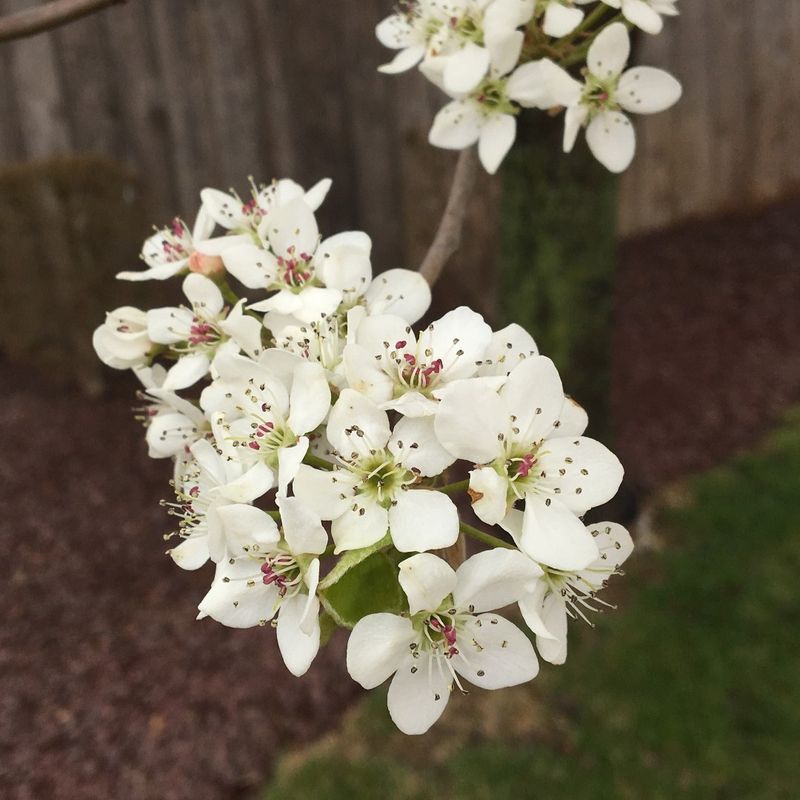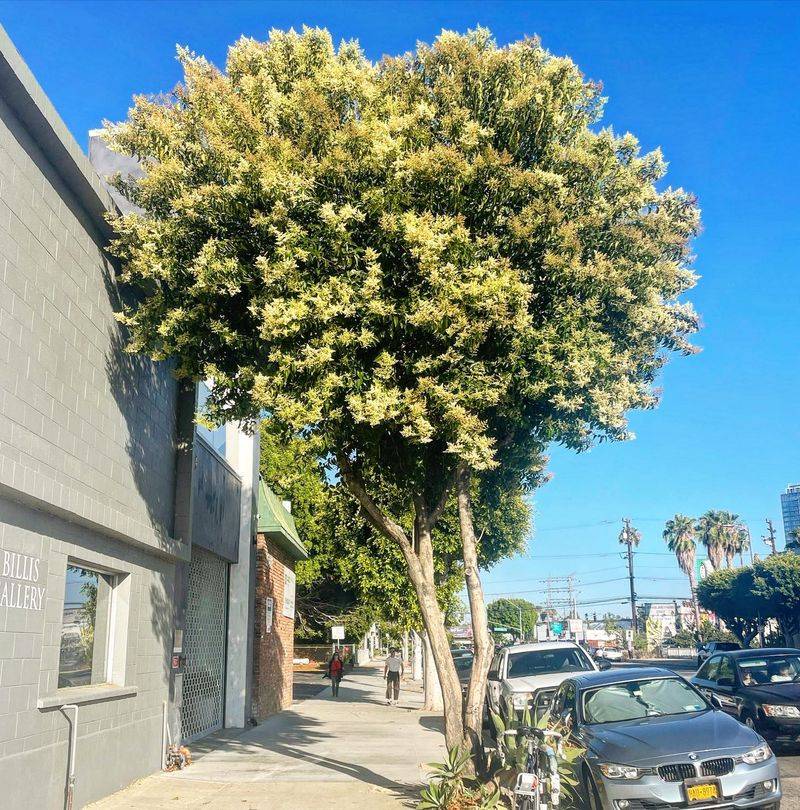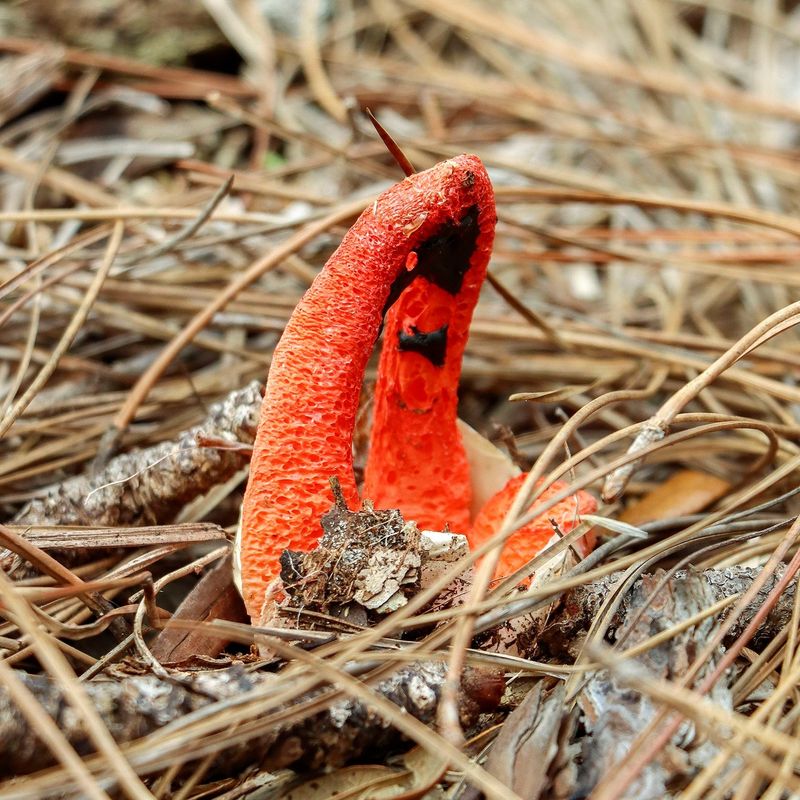Sunshine and flowers go hand in hand, right? Well, sometimes that brilliant sunlight brings out some seriously stinky blooms!
I was shocked when I realized that not all flowers with a bright, sunny vibe come with a sweet scent. In fact, some of these sun-lovers have odors that’ll make you wrinkle your nose instead of stopping to sniff.
If you’re looking to brighten up your garden, but want to avoid any unpleasant surprises, here are 18 sun-loving flowers that might just make you rethink their spot in your garden.
1. Corpse Flower
Enormous and rare, with a bloom that can reach 8 feet tall! The Corpse Flower opens for just 24-36 hours every few years, making it a botanical celebrity despite its horrific stench.
Amorphophallus titanum produces an odor similar to rotting flesh to attract carrion beetles and flies for pollination. The bloom generates heat, which helps spread its putrid scent farther into the surrounding air.
Found naturally in the rainforests of Sumatra, this spectacular plant needs warm temperatures and bright, indirect sunlight when cultivated. Botanical gardens around the world create special events when their specimens bloom, drawing crowds willing to hold their noses for a glimpse.
2. Stinking Hellebore
Early-blooming and deer-resistant, these winter flowers bring color when gardens need it most. Stinking Hellebore features leathery evergreen foliage and nodding cup-shaped blooms in shades of green and purple.
Crushing the leaves releases a distinctly unpleasant smell that’s been compared to wet dogs or burning rubber. Helleborus foetidus has earned its common name honestly! The odor comes from alkaloids that make the plant poisonous to animals.
Hardy and long-lived, these European natives thrive in partial shade but tolerate full sun in cooler climates. Their unusual fragrance doesn’t stop gardeners from appreciating their architectural form and ability to flower during the coldest months of the year.
3. Skunk Cabbage
First to emerge in wet spring soil, often melting surrounding snow with its heat-generating flowers! Skunk cabbage produces hooded blooms that peek through muddy ground before most other plants show signs of life.
True to its name, this native North American plant releases a skunk-like odor when the leaves or stems are damaged. The smell attracts early-season pollinators like flies and beetles who have few other options in late winter.
Growing in swampy areas and along stream banks, skunk cabbage needs consistently wet soil and can handle full sun if moisture is plentiful. Its huge tropical-looking leaves unfurl after flowering, creating a dramatic ground cover that lasts through summer.
4. Carrion Flower
Vining and vigorous, with star-shaped blooms that stop visitors in their tracks! Carrion flower vines can climb 20 feet in a single season, producing clusters of intricate flowers that smell like decomposing meat.
Stapelia species showcase some of the most fascinating blooms in the plant kingdom. Their fleshy star-shaped flowers are covered in fine hairs and often mottled with dark colors that resemble rotting flesh to attract fly pollinators.
Native to South Africa, these succulent plants crave sunshine and excellent drainage. Many gardeners grow them in containers to enjoy their bizarre blooms without subjecting their entire garden to the revolting smell that appears when flowers open.
5. Bradford Pear
Beloved for spring snow-white blossoms that blanket streets and yards each spring. Bradford pear trees create a stunning display that many communities have embraced for decades along roadways and in landscaping.
Unfortunately, the gorgeous white flowers emit an odor frequently compared to rotting fish or dirty gym socks! Pyrus calleryana became incredibly popular before people realized both its awful smell and invasive tendencies.
Growing rapidly in full sun, these trees reach 30-40 feet tall with perfect oval shapes. Many cities now discourage or ban new plantings despite their beauty because of their brittle branches, stinky flowers, and tendency to spread into natural areas where they outcompete native species.
6. Voodoo Lily
Mysteriously emerging from bare soil with a spotted snake-like stem! Voodoo Lily produces a single dramatic flower spike before its tropical foliage appears, creating a conversation piece in shade gardens.
Amorphophallus konjac sends up a purple-black spathe surrounding a tall spadix that can reach 3 feet high. The bloom releases a powerful stench of rotting meat that fills the surrounding area for days as it attempts to attract pollinating flies.
Easy to grow in partial sun to shade, this Asian native goes dormant in winter, disappearing completely until spring. Gardeners prize it for its unusual appearance despite holding their noses during its brief but memorable flowering period.
7. Butterfly Bush
Perfectly named for its ability to attract colorful winged visitors all summer long! Butterfly bush produces cone-shaped flower clusters in shades of purple, pink, or white that act as butterfly magnets in the garden.
Buddleja davidii varieties have divided gardeners with their fragrance. While some find it pleasantly honey-like, many detect notes of cat urine or wet dog, especially in certain cultivars or when flowers begin to fade.
Fast-growing in full sun, these shrubs can reach 10 feet tall in a single season. Their controversial smell doesn’t deter butterflies, who flock to the nectar-rich blooms. Modern compact varieties offer the wildlife benefits with less aggressive growth and sometimes milder fragrance.
8. Ginkgo Tree
Ancient and magnificent with fan-shaped leaves that turn brilliant gold in autumn! Ginkgo biloba trees have remained virtually unchanged for over 200 million years, making them living fossils in our landscapes.
Female ginkgo trees produce fleshy fruits that fall to the ground in autumn, releasing a smell often compared to vomit or rancid butter. The horrific odor comes from butyric acid in the fruit pulp, the same compound found in human vomit.
Thriving in full sun and tolerating urban pollution, these trees grow slowly to heights of 50-80 feet. Most nurseries sell only male trees to avoid the smelly fruit problem, though sometimes trees labeled as male can unexpectedly change sex as they mature.
9. Lily of the Valley
Delicate bell-shaped flowers sway on slender stems, creating a woodland fairytale scene in spring gardens. Convallaria majalis produces pristine white blooms that many people associate with weddings and Mother’s Day bouquets.
Surprisingly, while many gardeners prize this plant for its sweet perfume, others detect a distinctly unpleasant odor similar to mothballs or even cat urine. The perception varies widely based on individual sensitivity to certain chemical compounds.
Spreading rapidly in shady spots, these spring bloomers can handle morning sun in cooler climates. All parts contain cardiac glycosides that make them highly toxic if ingested, perhaps explaining why deer and rabbits leave them alone despite their tender appearance.
10. Stinking Iris
Mysterious dark purple blooms emerge from handsome evergreen foliage in late spring. Stinking Iris creates a bold architectural presence in shaded gardens with its stiff, sword-like leaves that remain attractive year-round.
Iris foetidissima earned its unfortunate common name from the unpleasant smell released when its leaves are crushed. The odor has been compared to roast beef gone bad or moldy cheese! Despite this drawback, the plant offers winter interest with bright orange seeds displayed in split pods.
Adaptable to sun or shade as long as soil drains well, this European native thrives in woodland gardens. Birds spread the colorful seeds, sometimes creating unexpected colonies in gardens where the plant wasn’t intentionally planted.
11. Valerian
Clouds of tiny star-shaped flowers hover above ferny foliage on tall stems throughout summer. Valeriana officinalis creates a dreamy, cottage garden effect with its airy clusters of pale pink or white blooms.
Widely used in herbal medicine to promote sleep, valerian root and flowers produce a distinctive smell often described as dirty socks, wet dog, or old cheese. Cats find the scent irresistible, similar to catnip, and may damage plants by rolling on them.
Thriving in full sun with average moisture, this European herb grows 3-5 feet tall and self-seeds readily. The smell intensifies when leaves are crushed or when harvesting roots for medicinal use, but many gardeners consider the beautiful flowers worth the occasional whiff of its peculiar fragrance.
12. Paperwhite Narcissus
Forced indoors during winter, these bulbs bring fragrant blooms when gardens outside lie dormant. Paperwhites produce clusters of delicate white flowers atop slender stems, creating instant cheer during the darkest months.
Narcissus tazetta has a powerful fragrance that divides opinion sharply! Many people detect notes of cat urine, ammonia, or public restrooms in what others describe as a sweet floral scent. The intensity often becomes overwhelming in enclosed spaces.
Growing easily in pebbles and water or in soil, these Mediterranean natives need bright light but no chilling period like other narcissus. Their controversial smell doesn’t diminish their popularity as holiday gifts and winter decorations, though some recipients may secretly wish for scentless alternatives.
13. Boxwood
Formal and elegant, creating the backbone of classic garden design for centuries! Boxwood shrubs form perfect geometric shapes when clipped, defining garden rooms and creating living architecture.
Buxus species release a distinctive odor often compared to cat urine, especially on hot days or after rain. The smell comes from alkaloids in the foliage that help protect the plant from being eaten by deer and other browsers.
Growing slowly in sun or partial shade, these evergreens create the perfect backdrop for flowering plants. Their malodorous nature becomes most noticeable during pruning sessions, when gardeners disturb the foliage and release more of the compounds responsible for the smell.
14. Hawthorn
Exploding into clouds of white blossoms each spring, creating a snowy effect across the landscape! Hawthorn trees offer four-season interest with spring flowers, summer berries, fall color, and architectural winter branches.
Crataegus species produce flowers containing trimethylamine, the same compound found in decaying fish. The resulting smell has been compared to rotting meat or decomposition, though intensity varies by species.
Thriving in full sun and adaptable to most soils, these tough native trees provide valuable wildlife habitat. Birds feast on the bright red berries while ignoring the brief but pungent flowering period. Medieval Europeans called hawthorns “the May flower” despite their smell, celebrating their bloom as a sign of spring’s arrival.
15. Dragon Arum
Dramatically rising from the ground like something from another world! Dragon Arum produces an enormous purple-black spathe surrounding a tall spadix that can reach 3 feet in height.
Dracunculus vulgaris creates a powerful stench of rotting meat that can be detected from surprising distances. The smell attracts flies and beetles that become trapped inside the flower, picking up pollen before escaping to pollinate other plants.
Growing best in rich, well-drained soil in full sun to part shade, this Mediterranean native makes an unforgettable garden specimen. After flowering, large tropical-looking compound leaves emerge to provide summer interest long after the memorable smell has faded away.
16. Callery Pear
Lining suburban streets with clouds of white flowers each spring, creating picture-perfect scenes. Callery pear varieties have been planted extensively across America for their fast growth, perfect oval shape, and reliable spring display.
Pyrus calleryana ‘Aristocrat’ and other cultivars produce masses of white flowers that smell like rotting fish or worse. The odor has been compared to everything from dead animals to bodily fluids, creating an unfortunate contrast with their visual beauty.
Flourishing in full sun and tolerating poor soil, these trees grow quickly to 30-40 feet. Many communities now discourage planting them due to their invasive nature, weak branch structure, and of course, that infamous spring stench that permeates entire neighborhoods.
17. California Privet
Commonly used for privacy screens and formal hedges in landscapes across America. California privet grows quickly into dense barriers that can be shaped to perfection with regular trimming.
Ligustrum ovalifolium produces abundant clusters of small white flowers in summer that emit a cloying, heavy scent many find nauseating. The smell has been described as a combination of cat urine and rotting fruit that becomes especially potent on humid evenings.
Flourishing in full sun to partial shade, this hedge plant tolerates pollution and poor soil with ease. Pollen from the fragrant flowers triggers severe allergies in many people, giving gardeners double reason to consider removing these plants despite their practical screening benefits.
18. Stinkhorn Mushroom
Suddenly appearing in mulched garden beds after rain, looking like something from an alien planet! Though not technically flowers, stinkhorn fungi produce colorful structures that mimic blooms and thrive in the same sunny garden conditions as many flowering plants.
Phallus impudicus and related species develop egg-like structures that hatch into distinctively shaped fruiting bodies covered in olive-green slime. The smell has been described as rotting flesh or sewage, designed to attract flies that spread spores.
Commonly found in wood mulch and rich organic soil, stinkhorns actually benefit gardens by breaking down organic matter. Despite their helpful role in decomposition, most gardeners promptly remove these malodorous mushrooms when they appear near patios or walkways.

